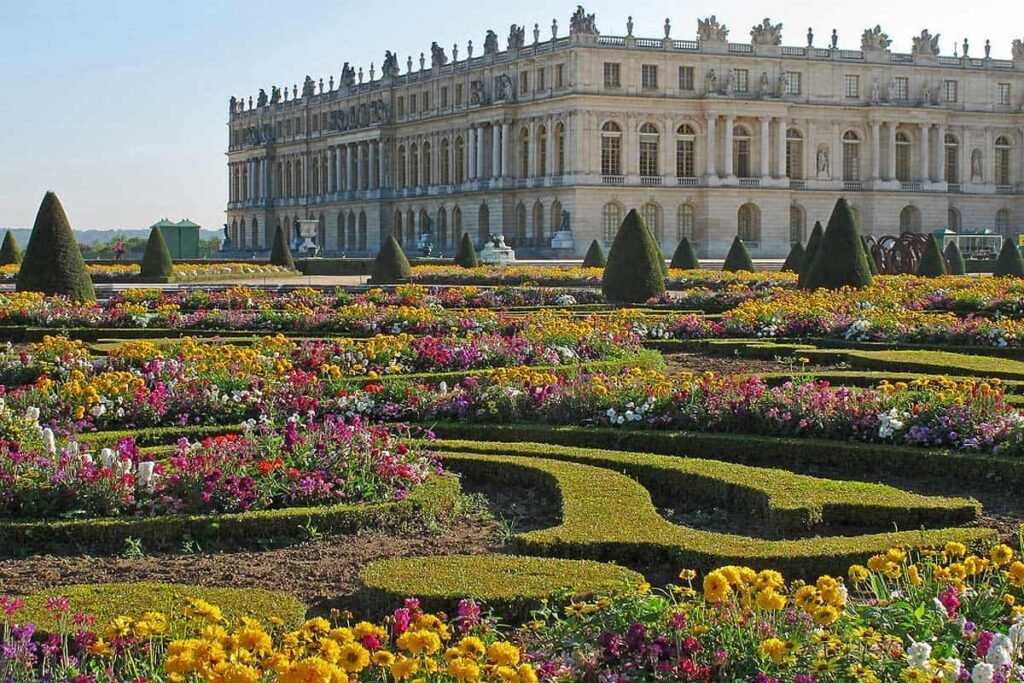More Than a Dish, It’s a Way of Life
For many, Valencia is synonymous with one word: paella. And rightly so. The city has gifted the world one of its most iconic and beloved dishes, a vibrant, saffron-scented circle of communal joy. But to truly know Valencia, you must go beyond the pan. You must discover the full spectrum of sensory experiences that shape the authentic Valencian lifestyle—what the city itself calls “life done better”.
This is a journey for your senses. It’s about more than just seeing the sights; it’s about tasting the salt on the sea breeze, feeling the ground shake with celebratory gunpowder, and understanding that in Valencia, the best things in life are meant to be savored, shared, and experienced with every fiber of your being. Prepare to do more than visit Valencia; prepare to live it.
A Taste of the Land and Sea – The Flavors that Define a Region
To understand Valencia’s soul, you must start with its stomach. The region’s gastronomy is a rich narrative of its landscape, its history, and its most cherished rituals.
The Sacred Ground of Paella – A Trip to L’Albufera
The real story of paella doesn’t begin in a kitchen; it begins in a boat. Just ten kilometers south of the city lies the Albufera Natural Park, a vast freshwater lagoon separated from the Mediterranean by a thin strip of pine-forested dunes. This serene, ecologically vital wetland, a sanctuary for over 350 species of birds, is the cradle of paella.
Take a traditional flat-bottomed boat trip across the placid waters, gliding past shimmering rice paddies that stretch to the horizon. This is the very landscape that gave birth to the dish. Centuries ago, farmers and laborers working these fields would gather for a midday meal, cooking rice in a wide, flat pan over an open fire of orange-tree wood. They used what the land provided: rabbit from the fields, chicken, local flat green beans (
ferradura), fat lima beans (garrofó), and the occasional snail.
This is the essence of Paella Valenciana—it is a perfect expression of its terroir, the unique taste of a specific place. The rice is grown in the marshy soil, the ingredients are drawn from the surrounding environment, and the smoky aroma comes from local wood. To eat an authentic paella at a traditional restaurant in the tiny village of El Palmar, in the heart of Albufera, is to complete this circle. It is a pilgrimage to the source, where the taste of the dish is inextricably linked to the land, water, and history of the region.
The Coolest Tradition – Horchata and Fartons
Valencia’s other great culinary gift to the world is a cool, sweet, and utterly refreshing drink: horchata de chufa. This is not the rice-based horchata found in Latin America; Valencia’s version is made from chufas, or tiger nuts, the small, sweet tubers of a sedge plant first introduced to the region by the Moors in the 8th century.
Legend has it that the drink got its name in the 13th century when a young girl offered a cup to the conquering King Jaume I. Delighted, he is said to have exclaimed, “¡Això no es llet, això és or, xata!” (“This is not milk; this is gold, my dear!”), thus coining the name horchata.
The true Valencian way to enjoy this drink is to find a classic horchatería, such as the historic Horchatería Santa Catalina near the Cathedral or the famous Horchatería Daniel in the Alboraya market, the heart of tiger nut country. Order a tall, frosted glass of horchata, often served slushy (
granizada), alongside an order of fartons. These long, light, and airy sweet buns are dusted with sugar and were specifically invented in the 1960s for one glorious purpose: to be dipped into the horchata, soaking up its creamy, nutty sweetness. This simple ritual is the taste of a Valencian summer afternoon.
The Cathedral of Food – A Morning at the Mercado Central
The Mercado Central is not merely a market; it is a living, breathing cathedral of food and a daily celebration of Valencian life. Housed in a spectacular Art Nouveau building of iron, ceramic tiles, and stained glass, it is Europe’s largest fresh produce market and an absolute feast for the senses.
Step inside and your senses are immediately overwhelmed. You see pyramids of gleaming oranges, deep red tomatoes, and countless varieties of local produce. You hear the rhythmic call and response of vendors and customers, a hum of commerce that has filled this hall for a century. You smell the intoxicating mix of fresh herbs, savory cheeses, cured meats, and the salty brine of the fish and seafood stalls, where live eels writhe in their tanks.
This market perfectly encapsulates the Valencian character: a profound respect for high-quality, fresh ingredients, an immense pride in its cultural heritage (the building itself), and a practical, life-goes-on attitude that seamlessly blends its role as a world-class tourist attraction with its primary function as a neighborhood grocery store. To truly absorb the atmosphere, do as the locals do: find a stool at the bustling Central Bar, run by renowned chef Ricard Camarena, and order a coffee or a few tapas. It is the best way to experience this magnificent microcosm of Valencian culture.
| A Taste of Valencia: Your Essential Culinary Checklist |
| Dish/Drink |
| Paella Valenciana |
| All i Pebre |
| Esgarraet |
| Horchata con Fartons |
| Agua de Valencia |
Export to Sheets
Breathing the Mediterranean Air – An Outdoor Way of Life
Valencia’s enviable climate, with nearly 300 days of sunshine a year, has fostered a culture that lives and breathes outdoors. The city is blessed with wide, golden-sand beaches, easily accessible from the center. The lively promenade of Malvarrosa Beach is perfect for a stroll, while the chic Marina, with its avant-garde Veles e Vents building, offers sophisticated spots to watch the sunset over the water.
But the true heart of Valencia’s outdoor life is the Turia Garden. This nine-kilometer-long park, born from a diverted riverbed, is the city’s communal backyard. It is a democratic space for everyone—a place for a morning run on a dedicated track, an afternoon cycle along its paths, a family picnic on the grass, or a game of football on its pitches. It is the physical embodiment of the city’s commitment to a healthy, active, and connected way of life, a green lung that invites you to slow down and simply enjoy the Mediterranean air.
The Spirit of Fire and Fiesta – A Sensory Overload at Las Fallas
Every March, Valencia erupts in a city-wide spectacle of art, fire, and sound known as Las Fallas. This UNESCO Intangible Cultural Heritage festival is a sensory overload in the best possible way, a tradition that must be experienced to be believed.
- The Sight: For days, the streets are transformed into an open-air art gallery filled with hundreds of fallas—colossal monuments of wood and papier-mâché. These are complex, multi-story sculptures, often satirical, poking fun at politicians and celebrities. The visual spectacle culminates in the Ofrenda de Flores, a deeply emotional two-day parade where tens of thousands of falleras and falleros in elaborate traditional silk costumes bring bouquets of flowers to create a massive floral cape for a giant effigy of the Virgin Mary.
- The Sound: From March 1st to the 19th, every day at precisely 2:00 PM, the Plaza del Ayuntamiento hosts the mascletà. This is not a firework display; it is a “concert of gunpowder,” an auditory barrage of coordinated firecracker explosions that builds in a deafening crescendo, a rhythmic earthquake of sound that you feel in your bones.
- The Smell: For the duration of the festival, the air is thick with the sharp, acrid, and strangely thrilling scent of gunpowder and smoke. It is the official perfume of Las Fallas.
- The Taste: The festival is fueled by street food, especially hot, sugary buñuelos de calabaza (pumpkin fritters) and chocolate, sold from countless stalls.
- The Feeling: The entire festival builds to the night of March 19th: La Cremà (The Burning). In a stunning act of catharsis and renewal, all the magnificent fallas, which took a full year and immense funds to create, are set ablaze in enormous bonfires. This act embodies a profound philosophy: it celebrates the process of creation and the community that builds it, valuing the ephemeral moment of celebration over the permanence of the object. The enduring heritage is not the art itself, but the ritual of its spectacular destruction and the promise of rebirth for the following year.
Don’t Just Visit Valencia, Live It
Valencia offers a journey that engages every sense. It’s in the taste of a true paella eaten in the very fields where it was born. It’s in the cool sweetness of horchata on a warm afternoon. It’s in the scent of orange blossoms and gunpowder hanging in the air. It’s in the roar of the mascletà that shakes the ground beneath your feet and the collective emotion of watching a year’s worth of art and passion turn to ash and rise again as a promise for the future.
So come to Valencia. But don’t just come to see it. Come to taste, to smell, to hear, and to feel. Come and live the Valencian dream.

